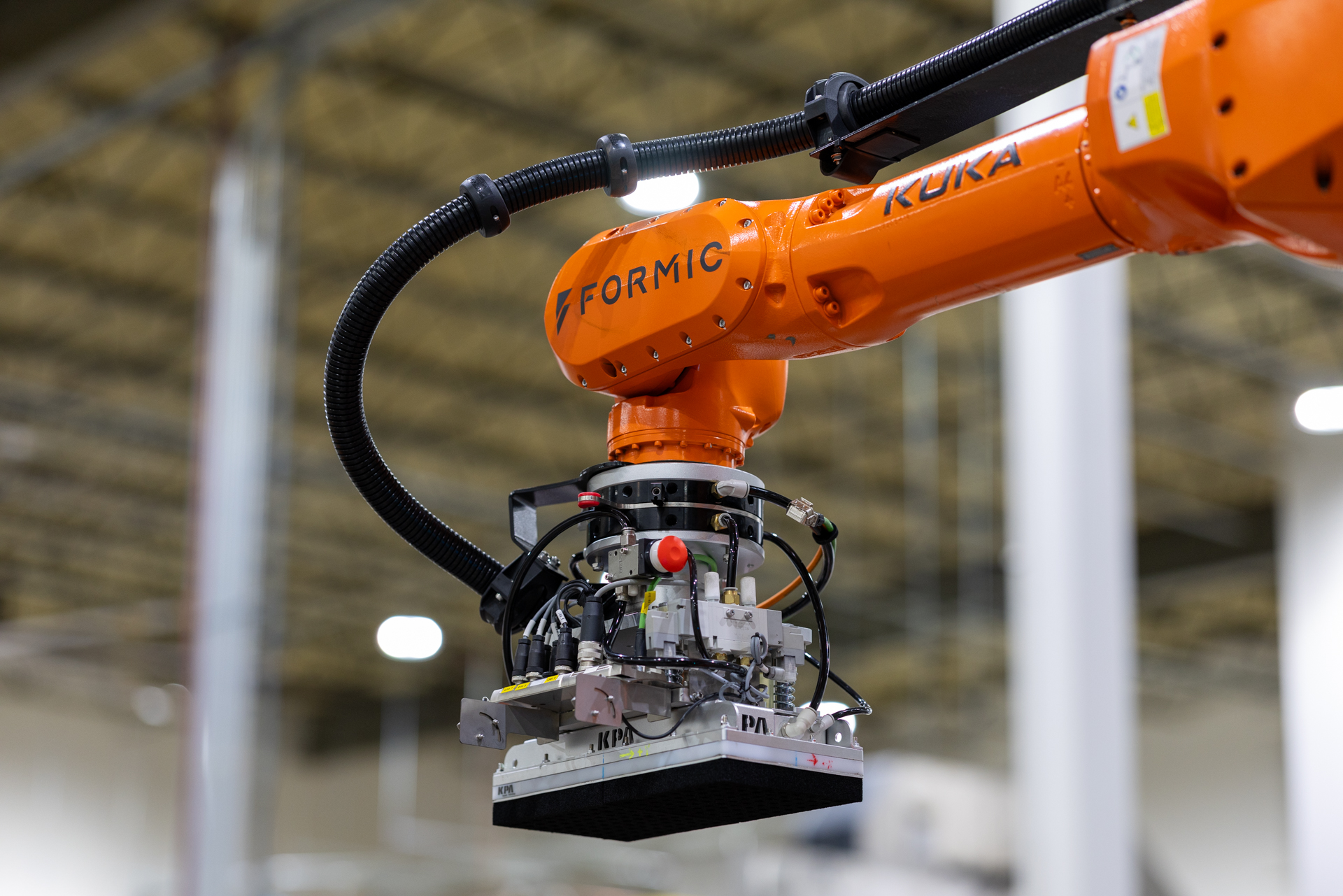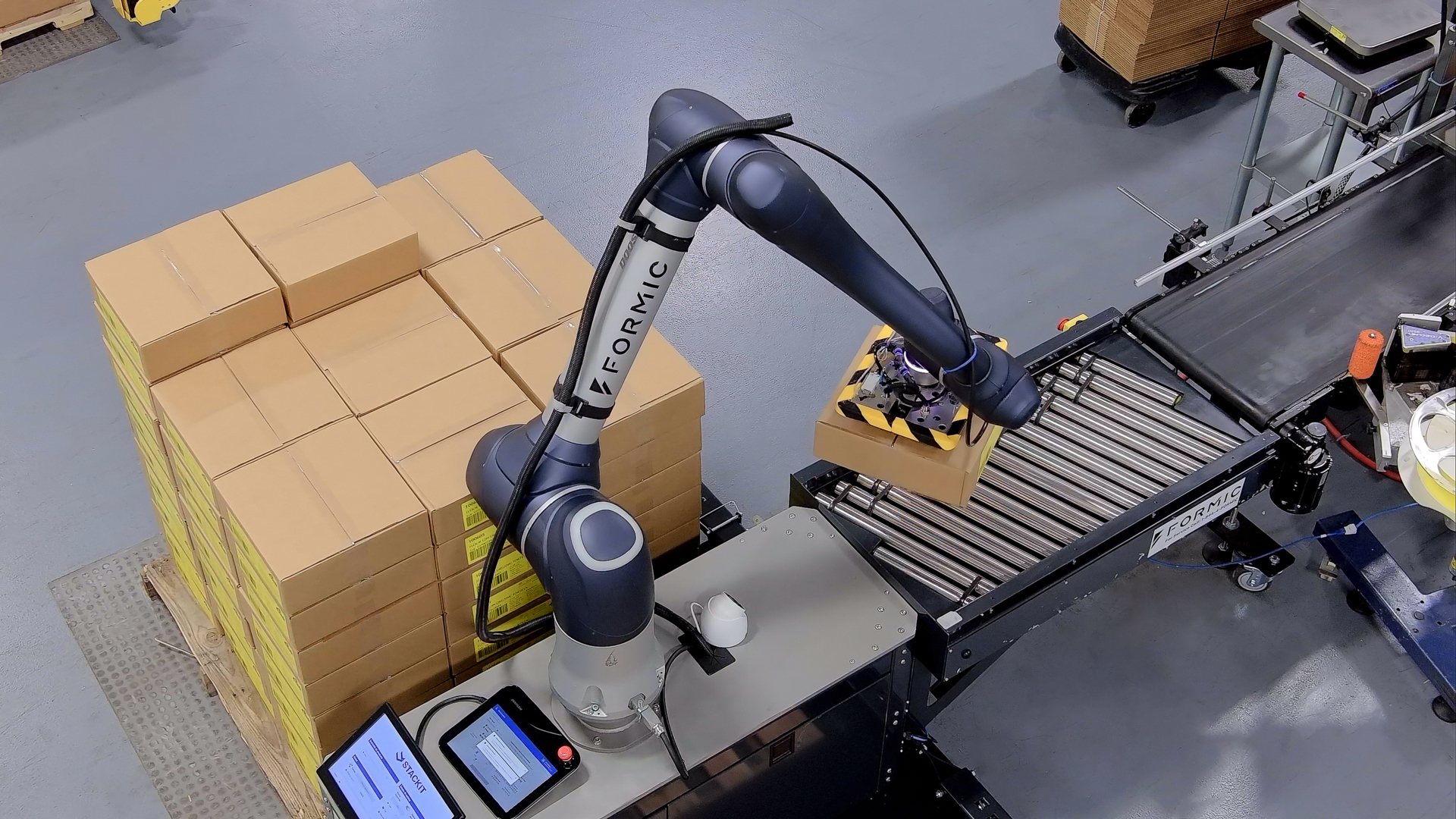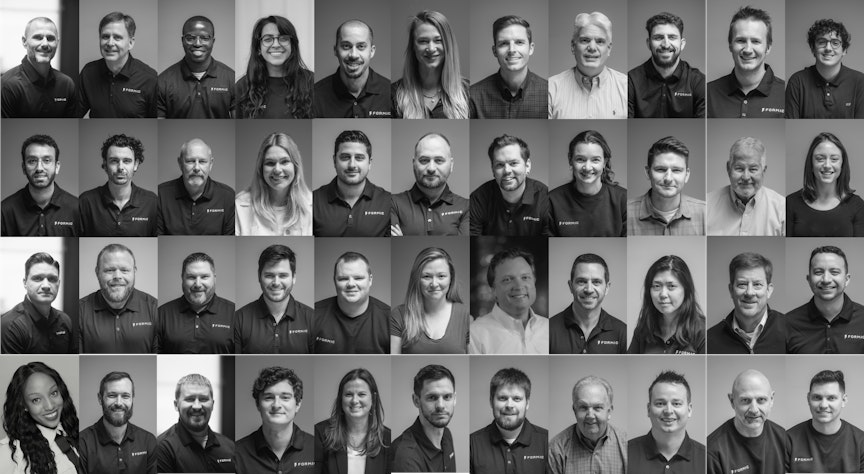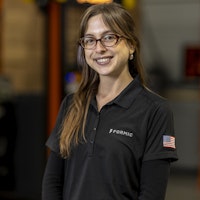In a world where American factories are running with 30% unfilled positions, how can we expect to meet rising demand? The answer might lie in robotics, but not in the way you might think.
In March, Formic’s Founder and CEO, Saman Farid, joined John Furrier for theCUBE + NYSE Wired’s Robotics and AI Media Week to discuss the growing robotics industry and how Formic is lowering barriers to entry for U.S. manufacturers.
Formic is the first company to do fully-managed services around automation. “We drop into factories that don’t have their own in-house robotics engineers and AI engineers, and we help them solve complex issues, and we just get paid a monthly or hourly rate to solve things like labor shortages in factories,” Farid told Furrier.
Around 98% of American manufacturing is comprised of small- and medium-sized businesses, but around 70% of these businesses have never deployed a robot. But with Formic’s business model, we’ve seen a rapid uptick in robotics adoption by eliminating barriers like cost, time, and human capital.
In the NYSE Wired interview, Farid broke down the need to automate right now, the positive impact on employee lives, and how the current market climate is creating a surge in American manufacturing demand.
Labor Shortages and Tariffs: The Push Toward Accessible Automation
As the U.S. manufacturing sector grapples with increasing labor shortages, the need for automation has never been more urgent. This growing labor gap, combined with the shifting landscape of global trade, makes automation a key solution for American manufacturers.
“On one side, we’re facing a lack of robot adoption,” Farid said. “On the other hand, we have greater than ever labor shortages.”
There are currently around 1.5 million unfilled U.S. manufacturing jobs, and with newly enforced tariffs and a great reshoring surge, there’s an increased demand for domestic manufacturing, but a growing labor shortage. The solution, Farid explained, for manufacturers to “meet the moment of the day and increase the American industrial base” is by adopting far more robotics. That’s where Formic comes in.
While robotic automation was once only for companies with large CapEx and internal engineering expertise, Formic has reconfigured this reality by increasing access with fully managed services.
“General Motors, Ford, and Tesla are great examples of factories that have automated over the last 30 years pretty heavily,” Farid said. “What people often forget is that for every General Motors plant, you have between 2,000 and 4,000 suppliers that make various components, whether it’s nuts and bolts, seats, or engine assemblies that all get built in these small and medium-sized factories. Those components end up in the car that you buy from General Motors.”
This is an often overlooked aspect of the manufacturing sector: the majority of the supply chain is powered by small- and medium-sized businesses. Formic partners with these businesses to deploy automation quickly and efficiently, and in recent months, we’ve seen a large incentive to amplify the domestic supply chain.
Additionally, with many American businesses being family-owned and operated but still growing, manufacturers located in low-population areas are running out of available working-age adults who want to come and work in a factory. It’s not uncommon for these factories to employ between 30% and 40% of the town, and many young people aren’t interested. Without robotics, there’s only so far you can go.

AI-Powered Robotics: Transforming the Supply Chain
While Formic’s automation solutions bring immediate benefits, the true potential lies in the integration of artificial intelligence. As AI continues to reshape the supply chain, robotics is becoming more adaptable and smarter, helping manufacturers meet the evolving demands of the market.
Today, artificial intelligence (AI) has changed how businesses think about their supply chain. “The types of components that you’re going to need in your supply chain look different today,” Farid said. “But also, on a macro level, you can use AI and some of these more modern tools to change the way you manage your supply chain.”
With the adoption of robotics at scale, factories can more dynamically evolve and redeploy capacity with demand forecasting. Traditionally, automation was fixed. When an automated line was built, the line could only produce one product all day, every day. This might work for larger manufacturers like General Motors, but smaller manufacturers need more customization.
In turn, Farid explained that to accomplish such customization with automation, production lines need to be more flexible and intelligent. It also doesn’t hurt to have a partner that manages the solution for you, like Formic.
The typical route to automation deployment is to use heavy system integration services to build a custom solution for specific plants. However, hiring a system integrator takes up between 40% to 60% of the allocated budget. This is an obvious hurdle for many companies with limited spend. While AI and intelligent systems are reducing this barrier, it’s really companies like Formic that are making automation accessible.
Formic is also focused on further standardizing solutions to make deployment even easier, as we've received requests from customers seeking help with closing labor gaps and rapidly automating tasks.
“We can show up within one or two weeks with a robot fully configured to do that task. AI will get us part of the way there,” Farid said. “AI makes the robot smarter, more flexible, and more capable of adapting, but there is still a physical constraint.”
For example, a robot configured to pick up a water bottle versus an engine block will require different robots. You need different grippers and sensors, so solving the physical differences is just as important as the algorithm and computational differences.
How Formic Bridges the Robotics Skills Gap for Manufacturers
AI alone isn't enough — what truly sets Formic apart is its hands-on, fully-managed approach. By deploying customized robots and offering ongoing support, Formic ensures that manufacturers, even with limited technical expertise, can fully benefit from automation.
Since its founding in 2020, many of Formic’s customer calls have started with a need to close labor gaps. The typical American factory today has 30% unfilled headcount and 200% annual turnover in its headcount. This means that for a factory of 500 people, you would have to hire 1,000 people a year to keep the factory up and running.
This shortage eliminates business opportunities and puts a massive strain on production efficiency. With maxed-out capacity and no labor availability, manufacturers have to turn down valuable business.
Additionally, even if a company should run second and third shifts to keep up with demand, these are the hardest shifts to fill. Often, facilities are only running seven or eight hours a day, and, without automation, they’re unable to grow and meet the demand or win new business.
When a customer calls Formic and asks if we can solve a problem for them, Formic starts the scoping process. “We do Full Service Automation, which means we show up and do an evaluation of their entire production line and suggest what to automate and the rough cost associated with that,” Farid said. “We use different software to automate the decision-making process around what needs to be automated and how to automate it.”
After customer approval, Formic does all the work: deploying the robots, installation, and, most importantly, ongoing maintenance. “Most of these small factories don’t have in-house engineering capabilities to manage and maintain robots, program robots, train the AI to adapt to different situations, or do error handling and all of the complexity that comes with that,” Farid said.
Now that these factories have tasks like palletizing and case packing automated, their workforce can be redeployed and expand overall throughput between 50% to 150%. At Formic, we’ve trained thousands of manufacturing employees to be robot operators. Instead of lifting 60-pound boxes and getting rotator cuff injuries or lower back injuries, they are in charge of ensuring the robot is operating effectively and doing the hard bending, lifting, and twisting.
Formic sees the benefits of accessible automation every day because its customers make all kinds of products that end up in grocery stores, coffee shops like Starbucks, vehicles, lawnmowers, and defense equipment.
“We’ve strengthened the American industrial base and we’ve made factories more profitable,” Farid said. “The workers’ lives are better. In order to really reach this goal of improving the American industrial base, robots seem to be the only answer.”

Reshoring and Automation: The Key to Strengthening American Manufacturing Resurgence
Formic’s impact on individual factories is undeniable, but its role in the larger context of reshoring and strengthening American manufacturing is equally critical. As tariffs and global disruptions continue to influence the market, Formic is helping to catalyze a resurgence of domestic manufacturing.
Newly enforced tariffs have exemplified the need to reinforce domestic manufacturing capacity, but the COVID-19 pandemic was also a wake-up call that if the U.S. doesn’t produce the things we rely on daily, we’re at risk.
While President Trump’s tariffs have increased uncertainty for manufacturing businesses and made decision-making more difficult, Farid explained that the direction we’re moving is clear: people are going to be heavily incentivized to try to produce more domestically.
At Formic, that increased demand for domestic manufacturing was clear from when the tariffs were threatened months ago in our robot usage data. Between January and February, Formic's customers increased their robot usage by more than 17% overall, likely because manufacturers were using robots to get ahead of any tariff-related pricing increases.
Additionally, Formic has seen an increase in customer inquiries, with many seeking production support to fulfill demand from major companies like General Motors, Nestlé, and Caterpillar, who are looking for a domestic alternative.
“We’re starting to see a massive surge of inbound requests from manufacturers who say, ‘I want to move my factory to the 21st century. Please help.’ That’s something we’ve been really excited to see,” Farid said.
Accessible Automation’s Vital Role in the Future of Manufacturing
As demand for domestic production rises, the need for scalable and accessible automation becomes ever more pressing. Formic stands at the forefront of this movement, playing a vital role in transforming the U.S. manufacturing landscape and helping businesses thrive in a new era.
Watch the full interview here.


